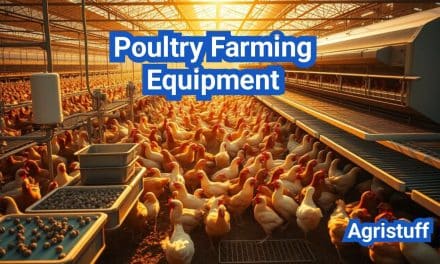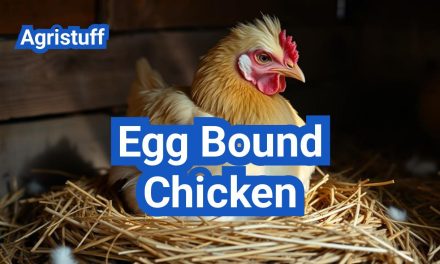For farmers looking to diversify their poultry, raising turkey ducks can be a profitable and sustainable option. Muscovy ducks, commonly referred to in the context of turkey ducks, are known for their robust health and the quality of their meat.
The practice of raising these birds combines the benefits of both duck and turkey farming, offering a unique product that can stand out in local markets, particularly in the USA where there’s a growing interest in backyard ducks.
Key Takeaways
- Muscovy ducks are a hardy breed, requiring less care compared to other poultry.
- Raising turkey ducks can diversify farm products and increase profitability.
- The meat of Muscovy ducks is considered a delicacy, offering a unique selling point.
- Proper care and management are crucial for the health and productivity of the ducks.
- Backyard farming of ducks is on the rise in the USA, presenting a market opportunity.
What Are Turkey Ducks? Understanding the Muscovy
Originating from the tropical regions of Central and South America, Muscovy ducks have been introduced to various parts of the world and are valued for their meat, eggs, and pest control abilities. Despite being called “turkey ducks,” they are not a hybrid of ducks and turkeys but a distinct species known as Cairina moschata.
Origin and Natural Habitat
Muscovy ducks are native to the warm, humid climates of Mexico, Central America, and South America. They inhabit areas near water bodies such as rivers, lakes, and wetlands, where they can forage for food and find suitable nesting sites. Their natural habitat includes dense vegetation and tree cavities, which provide shelter and protection from predators.
Turkey-Like Appearance and Features
Muscovy ducks are known for their striking appearance, which includes bright red caruncles on their faces and a distinctive call. Males have a more pronounced appearance with larger caruncles and a louder call compared to females. They have a broad, flat bill and a robust body, with males being larger than females. Their plumage varies, with colors ranging from black, white, to a combination of both, often with a glossy sheen.
Muscovy Duck vs. Normal Duck Differences
The main differences between Muscovy ducks and other domestic duck breeds include:
- Appearance: Muscovy ducks have a more streamlined body and a distinctive facial feature with red caruncles.
- Habitat: They are more adapted to living in a variety of environments, from wetlands to drier areas.
- Diet: Muscovy ducks are omnivores and will eat a wide range of foods including insects, plants, and small animals.
- Behavior: They are known to be less vocal than other duck breeds, with a hissing sound instead of quacking.
- Reproduction: Muscovy ducks can breed with other duck breeds, but their offspring are usually sterile.
Understanding these differences is crucial for farmers and backyard poultry keepers to manage their Muscovy duck flocks effectively.
Benefits of Raising Turkey Ducks on Your Farm

The benefits of raising turkey ducks are multifaceted, ranging from natural pest control to superior meat production. Incorporating these unique birds into your farm can lead to a more diverse and resilient poultry operation.
Natural Pest Control Capabilities
One of the significant advantages of raising turkey ducks is their ability to control pests naturally. Muscovy ducks are known to forage for insects, snails, and even small rodents, reducing the need for pesticides and maintaining a balanced ecosystem on your farm.
Pest Control Benefits:
- Reduced insect populations
- Lower risk of crop damage
- Minimized use of chemical pesticides
Superior Meat and Egg Production
Turkey ducks are valued for their high-quality meat and eggs. Muscovy duck meat is lean and tender, making it a delicacy in many cuisines. Additionally, their eggs are rich in flavor and nutrients, offering a unique product for both personal consumption and market sale.
| Product | Description | Market Value |
|---|---|---|
| Muscovy Duck Meat | Lean, tender, and flavorful | High demand in specialty markets |
| Muscovy Duck Eggs | Rich in flavor and nutrients | Popular in gourmet cooking |
Low Maintenance Requirements
Raising turkey ducks is relatively low maintenance compared to other poultry. They are hardy birds that adapt well to various farm conditions, requiring less intensive care and management.
“Muscovy ducks are known for their hardiness and ability to thrive in different environments, making them an ideal choice for farmers looking to diversify their poultry with minimal additional effort.”
Adaptability to Various Climates
Turkey ducks are adaptable to a range of climates, from temperate to tropical regions. This adaptability makes them suitable for farms in diverse geographical locations, allowing farmers to enjoy the benefits of raising Muscovy ducks regardless of their local climate.
By incorporating turkey ducks into your farm, you can leverage their natural pest control abilities, enjoy superior meat and egg production, benefit from low maintenance requirements, and take advantage of their adaptability to various climates. This makes Muscovy ducks a valuable addition to any poultry operation.
Getting Started: Acquiring Turkey Ducks
The journey to raising Muscovy ducks begins with sourcing them from reputable suppliers. Whether you’re a seasoned farmer or just starting out, acquiring healthy Muscovy ducks is crucial for the success of your poultry operation.
Where to Buy Muscovy Ducks
Finding the right place to buy Muscovy ducks is essential. You can source them from local farms, specialized poultry breeders, or online hatcheries. When purchasing online, ensure that the seller has a good reputation and provides healthy, vaccinated birds.
Some benefits of buying from local farms include the ability to inspect the birds personally and get advice from experienced breeders. Online hatcheries, on the other hand, often have a wider selection and may ship birds directly to your farm.
Selecting Healthy Birds
When selecting Muscovy ducks, look for birds that are active, have bright eyes, and show no signs of illness or injury. Healthy ducks will have smooth, clean feathers and be alert to their surroundings.
It’s also important to check for any signs of disease or parasites. Ask the seller about the health history of the birds, including any vaccinations they have received.
Key Characteristics of Healthy Muscovy Ducks:
- Active and alert
- Bright, clean eyes
- Smooth, clean feathers
- No signs of injury or illness
Cost Considerations
The cost of Muscovy ducks can vary based on factors such as age, sex, and breeding quality. Generally, you can expect to pay between $10 to $50 per duck, depending on these factors.
It’s also worth considering the cost of any additional equipment or feed you’ll need to get started. Initial setup costs can include a coop, fencing, feeders, and waterers.
| Item | Cost Range |
|---|---|
| Muscovy Duck (per bird) | $10-$50 |
| Duck Coop | $100-$500 |
| Fencing (per foot) | $3-$10 |
| Feeders and Waterers | $20-$100 |
By understanding the costs involved and knowing where to find healthy Muscovy ducks, you can make an informed decision and start your poultry farming journey on the right foot.
Setting Up Your Turkey Duck Habitat

Creating a suitable habitat for your turkey ducks is crucial for their health and productivity. A well-designed habitat not only ensures the well-being of your ducks but also makes managing them easier.
Duck Coop Requirements
The duck coop is a critical component of your turkey duck habitat. It provides shelter from the elements and protection from predators. When designing or selecting a coop, consider the following:
- Ensure adequate ventilation to prevent ammonia buildup from droppings.
- Provide enough space for your ducks to stand comfortably and move around.
- Use durable materials that can withstand various weather conditions.
- Include nesting boxes for egg-laying ducks.
As John Smith, a seasoned duck farmer, notes, “A good coop is the foundation of a healthy duck flock. It’s where they rest, lay eggs, and escape from predators.”
Water Features and Considerations
Turkey ducks need access to water for swimming and drinking. When incorporating water features into your habitat:
- Ensure the water is clean and free from contaminants.
- Provide a pond or pool large enough for your ducks to swim.
- Consider a filtration system to keep the water clean.
Predator Protection Measures
Protecting your turkey ducks from predators is vital. Common predators include foxes, raccoons, and birds of prey. To safeguard your ducks:
- Use sturdy fencing around the coop and enclosure.
- Cover the top of the enclosure to prevent aerial predators.
- Use guard animals like dogs or donkeys to deter predators.
“Predator protection is not just about the ducks; it’s also about the economic viability of your farm,” says Jane Doe, a poultry farming expert.
Space Requirements for Different Flock Sizes
The amount of space needed for your turkey ducks depends on the size of your flock. Generally, you should provide:
- At least 3-4 square feet per duck inside the coop.
- A minimum of 10-15 square feet per duck in the outdoor enclosure.
For larger flocks, consider expanding the enclosure or providing multiple coops to prevent overcrowding.
Essential Equipment for Raising Muscovy Ducks
Muscovy duck farming necessitates a range of essential equipment for optimal care. Providing the right tools and infrastructure is crucial for the health, productivity, and overall success of your Muscovy duck operation.
Feeders and Waterers
Choosing the right feeders and waterers is vital for the health and nutrition of your Muscovy ducks. Feeders should be designed to minimize waste and keep the feed clean and dry. Consider using feeders with adjustable heights to accommodate ducks of different ages and sizes. For waterers, it’s essential to use systems that provide fresh, clean water at all times. Nipple waterers are a popular choice as they reduce spillage and keep the water clean.
Nesting Boxes and Brooding Equipment
Nesting boxes are crucial for encouraging Muscovy ducks to lay eggs in a safe and clean environment. Nesting boxes should be well-ventilated, dry, and protected from predators. The size of the nesting boxes can vary, but generally, they should be large enough for the ducks to comfortably lay their eggs. Brooding equipment, including heat lamps and brooders, is essential for raising ducklings. Maintaining the right temperature is critical during the brooding phase.
Fencing and Containment Options
Fencing is a critical component of Muscovy duck farming, serving to protect the ducks from predators and prevent them from escaping. The fencing material should be durable and strong enough to withstand potential threats. The height of the fence will depend on the specific needs of your farm, but generally, a fence that is at least 3 feet high is recommended. Additionally, consider using hardware cloth around the perimeter to provide extra protection against predators.
By investing in the right equipment, you can ensure the success and productivity of your Muscovy duck farm. Properly equipped facilities not only improve the welfare of the ducks but also make management tasks easier for farmers.
Feeding Your Turkey Ducks Properly
A well-balanced diet is key to raising healthy and thriving Muscovy ducks. Proper nutrition supports their growth, egg production, and overall health.
Nutritional Requirements by Age
Muscovy ducks have different nutritional needs at various stages of their life. Ducklings require a starter feed rich in protein (around 20%) during their first few weeks. As they grow, the protein content can be gradually reduced.
- Ducklings (0-4 weeks): 20% protein starter feed
- Growing ducks (4-12 weeks): 16-18% protein grower feed
- Adult ducks: 14-16% protein maintenance feed
Duck Niacin Supplements and Why They’re Important
Niacin is a crucial vitamin for Muscovy ducks, particularly for their growth and leg health. Supplementing with niacin can prevent conditions like bowed legs.
Key benefits of niacin supplements:
- Promotes healthy growth and development
- Prevents niacin deficiency disorders
- Supports overall health and well-being
Foraging Benefits and Natural Diet
Muscovy ducks are natural foragers and can benefit from a diet that includes a variety of plants, insects, and small aquatic organisms. Allowing them to forage can reduce feeding costs and improve their nutritional intake.
Foraging benefits include:
- Diverse nutrient intake
- Reduced feed costs
- Improved mental and physical health
Seasonal Feeding Adjustments
The dietary needs of Muscovy ducks can vary with the seasons. For example, during colder months, they may require more energy-rich foods to maintain their body temperature.
Seasonal adjustments to consider:
- Increase energy-rich foods in winter
- Provide more protein-rich foods during molting
- Ensure access to fresh water year-round
Health Management for Muscovy Ducks

To ensure the longevity and health of Muscovy ducks, farmers must implement robust health management strategies. Effective health management is crucial for preventing diseases and maintaining the overall well-being of the ducks.
Common Health Issues and Prevention
Muscovy ducks are generally hardy birds, but they can be susceptible to certain health issues if not properly cared for. Some common health problems include:
- Respiratory infections
- Parasitic infestations
- Avian influenza
Preventive measures such as maintaining a clean living environment, providing a balanced diet, and ensuring access to clean water can significantly reduce the risk of these health issues.
Vaccination Schedule
Vaccination is a critical component of Muscovy duck health management. The vaccination schedule may vary depending on the region and specific health risks. Common vaccinations include those for avian influenza and Newcastle disease.
| Vaccination Type | Age of Vaccination | Booster Schedule |
|---|---|---|
| Avian Influenza | 4-6 weeks | Annually |
| Newcastle Disease | 1-2 weeks | Every 6 months |
When to Consult a Veterinarian
It’s essential to monitor the health of your Muscovy ducks regularly. Consult a veterinarian if you notice any signs of illness, such as labored breathing, lethargy, or unusual droppings. Regular check-ups can help prevent health issues and ensure the ducks receive timely medical intervention when needed.
Key indicators for veterinary consultation:
- Unusual mortality rates
- Signs of disease outbreak
- Injury or trauma
By maintaining a proactive approach to health management, Muscovy duck farmers can ensure the health and productivity of their flock.
Breeding and Reproduction of Turkey Ducks

Successful Muscovy duck breeding depends on understanding their unique characteristics and needs. Breeding these birds requires careful planning, attention to their behavior, and a good grasp of their reproductive cycle.
Understanding Broody Duck Behavior
Muscovy ducks exhibit broody behavior, where they become inclined to sit on eggs and incubate them. This behavior is crucial for natural breeding. Recognizing the signs of broodiness, such as nesting and protective behavior, is essential for farmers to manage the breeding process effectively.
Broody Muscovy ducks will often stop laying eggs and focus on incubating their eggs. It’s vital to provide a safe and comfortable environment for these ducks to ensure successful incubation.
Egg Incubation: Natural vs. Artificial
Egg incubation is a critical phase in Muscovy duck breeding. Farmers can choose between natural incubation, where the eggs are left with the broody duck, and artificial incubation, which involves using an incubator to control temperature and humidity.
| Incubation Method | Advantages | Disadvantages |
|---|---|---|
| Natural Incubation | Lower initial cost, natural hatching process | Limited control over incubation conditions, dependent on broody duck behavior |
| Artificial Incubation | High control over temperature and humidity, potentially higher success rate | Higher initial cost for equipment, requires technical knowledge |
Raising Turkey Ducklings Successfully
Raising Muscovy ducklings requires attention to their nutritional needs, health management, and environmental conditions. Providing adequate brooding facilities with proper temperature control is crucial for the survival and growth of the ducklings.
Key factors in raising healthy ducklings include ensuring they have access to clean water, appropriate feed, and a safe living environment. Monitoring their health and growth rate is also vital.
Managing Breeding Cycles
Managing the breeding cycles of Muscovy ducks involves planning for the optimal breeding season, monitoring the health and fertility of the breeding stock, and ensuring that the ducks have the necessary resources for successful breeding.
Farmers should keep records of breeding activities, including mating dates, egg production, and hatching rates, to refine their breeding strategies over time.
Harvesting and Processing Muscovy Products
Harvesting Muscovy duck products requires an understanding of their unique characteristics. Muscovy ducks are known for their high-quality meat and eggs, making them a valuable addition to any farm. The process of harvesting these products involves several steps, from preparation to final processing.
Muscovy Duck Meat Characteristics and Preparation
Muscovy duck meat is prized for its leaner profile compared to other duck breeds. It has a rich, gamey flavor that is often compared to roast beef. To prepare Muscovy duck meat for consumption, it’s essential to follow proper handling and processing techniques. This includes humane slaughter practices, thorough cleaning, and appropriate storage to maintain quality.
The meat can be cooked in various ways, including roasting, grilling, or stewing. Its lean nature means it can become dry if overcooked, so careful attention to cooking times is crucial. Many chefs appreciate the versatility of Muscovy duck meat, using it in a range of dishes from traditional roasts to more exotic recipes.
Egg Collection, Storage, and Usage
Muscovy ducks lay large, white eggs that are not only delicious but also have a lower cholesterol content compared to chicken eggs. Collecting eggs regularly is vital to encourage continuous laying and to keep the eggs clean. Eggs should be stored in a cool, dry place, ideally in the refrigerator to maintain freshness.
When using Muscovy duck eggs, it’s worth noting that they have a slightly different taste and texture compared to chicken eggs. They can be used in any recipe that calls for eggs, and their larger size means they are ideal for baking and cooking. Some people prefer them for their richer flavor and firmer texture.
Humane Harvesting Practices
Humane harvesting practices are crucial when raising Muscovy ducks for meat. This involves ensuring that the ducks are treated with respect and care throughout their lives and are slaughtered in a manner that minimizes stress and pain. Humane treatment is not only ethical but also results in better-quality meat.
Farmers should be knowledgeable about local regulations regarding the slaughter and processing of poultry. Many regions have specific guidelines to ensure that harvesting is done humanely and safely. Training or consulting with experienced professionals can help ensure that these practices are carried out correctly.
By focusing on humane harvesting practices and proper processing techniques, farmers can provide high-quality Muscovy duck products to their customers, enhancing their reputation and contributing to the welfare of the animals.
Identifying Male vs Female Muscovy Ducks

Understanding the sex of Muscovy ducks is crucial for effective flock management. Muscovy ducks, known for their distinctive appearance and behaviors, require careful identification of males and females to ensure a balanced and productive flock.
Physical Differences and Caruncle Development
Male and female Muscovy ducks exhibit several physical differences. One of the most notable distinctions is the size: males are generally larger than females. Males can weigh between 4 to 6 pounds, while females typically weigh between 2 to 4 pounds.
Another key physical characteristic is the caruncle, a fleshy growth on the face and head. Males develop more pronounced caruncles than females, especially as they mature. The caruncles on males tend to be larger, redder, and more pronounced, whereas females have smaller, less vibrant caruncles.
Behavioral Distinctions
Behavioral differences between male and female Muscovy ducks are also significant. Males tend to be more aggressive, particularly during the breeding season. They can be territorial and may fight with other males.
Females, on the other hand, are generally more docile and focused on nesting and raising their young. They may become broody, meaning they will sit on eggs and care for the ducklings.
- Males are more vocal and make a hissing sound.
- Females are quieter and make softer sounds.
Importance of Proper Sex Ratios in Your Flock
Maintaining a proper sex ratio in your Muscovy duck flock is vital for several reasons. An appropriate ratio ensures that females are not overly stressed by excessive male attention, which can lead to health issues.
A general guideline is to maintain a ratio of one male to several females. This ratio can help prevent aggression among males and reduce stress on the females.
Key considerations for sex ratios include:
- The age and size of the ducks.
- The overall health and condition of the flock.
- Breeding objectives.
By understanding and managing the sex ratios in your Muscovy duck flock, you can create a more harmonious and productive environment for your birds.
Raising Chickens, Ducks, and Turkeys Together

Mixed poultry flocks offer several benefits, but they also present unique challenges. Farmers who decide to raise chickens, ducks, and turkeys together must consider various factors to ensure a harmonious and productive flock.
Space and Housing Considerations
One of the primary concerns when raising multiple poultry species together is providing adequate space and suitable housing. Each species has different requirements for roosting, nesting, and foraging. Ensuring that the coop and surrounding area are spacious enough to accommodate all birds comfortably is crucial.
A general rule of thumb is to provide at least 2-4 square feet per bird inside the coop, depending on the species and size. The outdoor enclosure should offer even more space, allowing birds to exercise and engage in natural behaviors.
Managing Different Dietary Needs
Different poultry species have varying nutritional requirements. Chickens, ducks, and turkeys need different levels of proteins, vitamins, and minerals. Farmers must ensure that they provide a balanced diet that meets the needs of all species in the flock.
Using a multi-species feed can be a practical solution, or farmers can segregate feeding times and provide species-specific feed. It’s also essential to ensure access to clean water at all times.
Preventing Interspecies Conflicts
Introducing different species to the same flock can lead to conflicts, especially during feeding or when competing for resources. To minimize these conflicts, farmers should provide multiple feeding stations and water sources.
Monitoring the flock’s behavior and intervening early can prevent serious conflicts. Ensuring that there are enough hiding spots and visual barriers can also help reduce stress among the birds.
Benefits of Mixed Poultry Flocks
Despite the challenges, raising chickens, ducks, and turkeys together can offer several benefits. Mixed poultry flocks can enhance biodiversity on the farm, improve pest control, and increase overall productivity.
Having multiple species can also help in managing pests and diseases, as some species are more resistant to certain parasites. Additionally, a diverse flock can be more resilient to environmental changes and market demands.
Legal Considerations for Raising Muscovy Ducks in the USA

Understanding the legal landscape is crucial for anyone looking to raise Muscovy ducks commercially or as a hobby. The regulations surrounding Muscovy duck farming vary significantly across the United States, making it essential for farmers and hobbyists alike to be well-informed about the laws governing their area.
Federal Regulations
At the federal level, Muscovy ducks are considered an invasive species due to their potential to cause harm to native ecosystems. The U.S. Fish and Wildlife Service plays a crucial role in managing the impact of non-native species, including Muscovy ducks. While there are no blanket federal regulations prohibiting the raising of Muscovy ducks, there are guidelines and restrictions on their sale, transport, and release into the wild.
Farmers and breeders must ensure that their Muscovy ducks are kept in secure enclosures to prevent escape and potential invasion of native habitats. This is not only a matter of legal compliance but also of environmental stewardship.
State Regulations
State regulations regarding Muscovy ducks vary widely. Some states have banned the possession of Muscovy ducks due to their invasive potential, while others have specific regulations governing their keeping. For example, in Florida, Muscovy ducks are considered a prohibited species and cannot be kept without a permit. In contrast, other states may have more lenient policies.
It is crucial for anyone considering raising Muscovy ducks to check with their state’s wildlife agency or department of agriculture to understand the specific regulations that apply to their location.
Invasive Species Concerns
The primary concern with Muscovy ducks is their potential to become an invasive species. These ducks can outcompete native birds for food and habitat, and they can also cause significant damage to crops and property. As such, many states have laws in place to prevent the release of Muscovy ducks into the wild.
To mitigate these risks, farmers and hobbyists must take steps to ensure that their Muscovy ducks are securely contained. This includes using appropriate fencing and enclosures that prevent escape.
Permits and Requirements
Depending on the state and local regulations, permits may be required to keep Muscovy ducks. These permits can help ensure that the ducks are being kept in a manner that minimizes the risk of escape and invasion. Additionally, some states require registration of Muscovy duck flocks or reporting of certain activities related to their keeping.
To comply with these regulations, it’s advisable to consult with local authorities or a legal expert familiar with agricultural and wildlife laws in your area.
Troubleshooting Common Turkey Duck Challenges
Successfully managing a Muscovy duck flock requires understanding and mitigating common challenges. While these birds are generally hardy and adaptable, certain issues can arise that need to be addressed promptly to ensure the health and productivity of your flock.
Managing Aggressive Behavior
Muscovy ducks, especially males, can exhibit aggressive behavior during certain times of the year. It’s crucial to recognize the signs of aggression early to prevent injuries to other ducks, humans, and pets. Providing adequate space and ensuring a proper sex ratio can help mitigate aggressive behavior.
“Aggression in Muscovy ducks is often a result of territoriality and mating instincts,” notes an experienced duck breeder.
“By understanding these natural behaviors, keepers can take steps to minimize conflicts within the flock.”
Dealing with Nesting Outside the Coop
Muscovy ducks are known to be secretive nesters and may choose to lay eggs outside the provided coop. To encourage nesting within the coop, ensure it is clean, secure, and provides adequate privacy. Collecting eggs frequently can also discourage hens from seeking alternative nesting sites.
Integrating New Birds to Your Flock
Introducing new Muscovy ducks to an existing flock requires careful planning. A gradual introduction process can help reduce stress and prevent fighting. Start by keeping the new birds in a separate enclosure within sight of the existing flock, then gradually allow supervised interactions.
- Keep new birds isolated initially
- Allow visual contact before physical introduction
- Monitor interactions closely
- Provide multiple feeding and watering stations
Seasonal Challenges and Solutions
Muscovy duck keepers face different challenges throughout the year. During hot weather, ensure adequate shade and water supply. In colder climates, provide shelter from wind and frost. Understanding these seasonal needs can help you prepare and maintain a healthy flock year-round.
| Season | Challenge | Solution |
|---|---|---|
| Summer | Heat stress | Provide shade and extra water |
| Winter | Cold exposure | Ensure shelter and wind protection |
| Spring | Aggressive behavior | Monitor and manage sex ratios |
At The End of: Raising Turkey Ducks
Raising turkey ducks, or Muscovy ducks, can be a highly rewarding experience for farmers and backyard poultry enthusiasts. These unique birds offer several benefits, including natural pest control, superior meat and egg production, and low maintenance requirements.
By understanding the specific needs of Muscovy ducks, such as proper habitat setup, nutritional requirements, and health management, you can ensure a thriving flock. The benefits of muscovy ducks make them an attractive addition to any farm or backyard.
Effective muscovy duck care involves providing a suitable environment, managing breeding cycles, and harvesting products humanely. With proper care and attention, raising turkey ducks can be a profitable and enjoyable venture.
FAQ
What are turkey ducks, and how do they differ from other duck breeds?
Turkey ducks, also known as Muscovy ducks, are a unique breed that combines characteristics of both turkeys and ducks. They are known for their distinctive appearance, with males having a bright red and black plumage, and females being more subdued in their coloring.
What are the benefits of raising Muscovy ducks on farms?
Muscovy ducks offer several benefits, including natural pest control, superior meat and egg production, and adaptability to different climates. They are also relatively low maintenance compared to other poultry.
How do I get started with raising Muscovy ducks?
To get started, you can purchase Muscovy ducks from a reputable breeder or supplier. It’s essential to select healthy birds and consider factors such as cost, housing, and nutritional needs.
What are the nutritional requirements of Muscovy ducks?
Muscovy ducks require a balanced diet that includes a mix of grains, proteins, and vitamins. Niacin supplements are also crucial for their health, particularly during the growth stage.
How do I identify male and female Muscovy ducks?
Males and females can be distinguished by their physical characteristics, such as the presence of caruncles (fleshy growths) on the face and bill of males. Behavioral differences, such as aggression and mating behaviors, can also be used to identify males.
Can I raise Muscovy ducks with other poultry, such as chickens and turkeys?
Yes, Muscovy ducks can be raised with other poultry, but it’s crucial to consider factors such as space, housing, and dietary needs. Introducing new birds to the flock should be done carefully to prevent conflicts.
Are Muscovy ducks considered an invasive species in the USA?
In some regions, Muscovy ducks are considered an invasive species due to their potential to outcompete native waterfowl and cause environmental damage. It’s essential to check local regulations before raising them.
How do I manage common health issues in Muscovy ducks?
Regular health checks, vaccinations, and maintaining a clean and safe environment can help prevent common health issues. Consulting a veterinarian is recommended if you suspect any health problems.
What are the benefits of harvesting Muscovy duck products, such as meat and eggs?
Muscovy duck meat is considered a delicacy, and their eggs are also prized for their rich flavor and nutritional value. Humane harvesting practices are essential to ensure the quality and safety of these products.
How do I troubleshoot common challenges with Muscovy ducks, such as aggressive behavior or nesting issues?
Managing aggressive behavior involves understanding the causes, such as breeding season or territoriality, and taking steps to mitigate it. Nesting issues can be addressed by providing suitable nesting boxes and managing the flock’s behavior.
Conclusion of: Raising Turkey Ducks
Why Turkey Ducks Belong on Modern U.S. Farms
Turkey Ducks are a standout option for American homesteads and small farms that want hardy, quiet, multipurpose birds for meat, eggs, and natural pest control. From their calm temperament to their efficient foraging habits, Turkey Ducks offer a compelling balance of low noise, lean meat, and strong mothering—qualities that make Turkey Ducks different from typical domestic ducks and surprisingly easy to integrate into diversified farm operations. Learn more about sustainable poultry integration from the USDA’s National Agricultural Library.
What People Mean by “Turkey Ducks”
Turkey Ducks is a common farm nickname for the Muscovy duck (Cairina moschata), a distinct waterfowl species renowned for the red, bumpy facial skin and for being exceptionally useful on small farms. In many extension and breed references, Turkey Ducks are listed among the Muscovy’s alternate names, which helps explain why Turkey Ducks show up in backyard poultry discussions from coast to coast in the U.S. Explore Muscovy duck breed profiles from Michigan State University Extension.
The Signature Look of Turkey Ducks
Turkey Ducks are instantly recognizable by their caruncles—the fleshy, bright growths on the face that resemble (and likely inspired the nickname from) turkeys. These caruncles are normal and are referenced in poultry glossaries as a shared feature of turkeys and Muscovy-type Turkey Ducks, helping farmers quickly identify Turkey Ducks in mixed flocks. Read about poultry anatomy from the University of Florida’s IFAS Extension.
Size, Build, and Growth Traits of Turkey Ducks
Turkey Ducks are a large-bodied waterfowl with strong sexual dimorphism: mature drakes typically reach about 10–14 lb while females average near 5–7 lb, making Turkey Ducks substantial table birds without the excessive fat typical of some duck breeds. On diversified farms, Turkey Ducks are often chosen for meat because their carcasses tend to be leaner than many mallard-derived ducks, which gives Turkey Ducks a different culinary profile and an appealing marketing angle. Compare duck breed meat yields via Penn State Extension.
Temperament and Behavior: Quiet, Calm, and Farm-Friendly Turkey Ducks
Unlike most domestic ducks, Turkey Ducks rarely “quack.” Males tend to hiss and females trill, so Turkey Ducks are far quieter in suburb-adjacent homesteads than many poultry choices. Another behavior win: Turkey Ducks perch, and in the wild they’re natural cavity nesters with strong claws, so Turkey Ducks will roost on sturdy branches or perches if offered, making them adaptable to mixed poultry setups while keeping noise down for neighbors. Discover quiet poultry options from the University of Arkansas Division of Agriculture.
Pest Control and Pasture Performance with Turkey Ducks
Turkey Ducks thrive as foragers, patrolling gardens, orchards, and fence lines for slugs, snails, mosquito larvae, and other soft-bodied pests. Many smallholders add Turkey Ducks to reduce pest pressure while collecting eggs and growing a lean meat flock, making Turkey Ducks a triple-purpose asset for integrated farms. Their strong broody instincts and good mothering also mean Turkey Ducks can maintain self-replacing flocks on pasture with minimal fuss. Study pest management with ducks from the Ecological Landscape Alliance.
Egg Laying and Broodiness: What to Expect from Turkey Ducks
As layers, Turkey Ducks are seasonal and broody by nature. Your Turkey Ducks won’t match the year-round output of high-production egg breeds, but they compensate with clutch-based laying, excellent hatch rates, and robust ducklings. A practical planning number is dozens of eggs per season rather than hundreds; importantly, incubation for Turkey Ducks takes about 35 days—longer than the 28 days common in other domestic ducks—so factor that timing into your hatching and brooding calendar for Turkey Ducks. Review duck egg incubation guidelines from the USDA’s Animal Welfare Information Center.
Housing Basics: Space, Safety, and Sanitation for Turkey Ducks
Provide Turkey Ducks with dry, draft-free night housing that protects against raccoons, foxes, dogs, and raptors. As a practical standard, plan at least 5 square feet of indoor floor space per adult when Turkey Ducks are confined overnight, plus a generous fenced run for daytime ranging. Because Turkey Ducks are waterfowl, ensure ventilation and bedding management are on point to keep litter dry; good housing keeps Turkey Ducks healthier and easier to care for in all seasons. Access poultry housing best practices from the University of Kentucky Cooperative Extension.
Water Access That Works for Turkey Ducks
While a pond isn’t mandatory, Turkey Ducks must have clean, fresh water deep enough to submerge their bills to aid swallowing and keep nares and eyes clear. For daily management, many farms use tubs or kiddie pools outdoors and deep buckets that allow head-dunking but not full-body swimming in winter. Keep waterers elevated or on grates inside to prevent soaked bedding and to keep Turkey Ducks in top condition. Learn about waterfowl hydration needs from the Cornell University Duck Research Laboratory.
Feeding Turkey Ducks: Practical Rations and Niacin Know-How
Start Turkey Ducks on a high-quality waterfowl or all-flock starter (commonly 18–23% protein) for the first 2–3 weeks, transition to a grower (around 18–20%), then use a layer or breeder ration (typically ~16% protein with adequate calcium) for producing hens. If you rely on chick starter in a pinch, remember Turkey Ducks need more niacin than chicks—so add niacin to avoid leg issues and support strong growth in Turkey Ducks. Refer to waterfowl nutrition guides from the USDA’s Agricultural Research Service.
Nesting, Incubation, and Raising Ducklings from Turkey Ducks
Provide Turkey Ducks with quiet nest boxes lined with clean bedding, placed low and secure to discourage egg damage. Because incubation is 35 days for Turkey Ducks, keep humidity and temperature steady if you’re using an incubator, and give broody hens undisturbed space if you let Turkey Ducks hatch naturally. After hatch, ensure warm, draft-free brooders with good traction flooring and easy access to waterers designed for waterfowl so Turkey Ducks don’t chill or soak their bedding. Get detailed incubation guidelines from the Mississippi State University Extension Service.
Flight and Fencing: Keeping Turkey Ducks Where You Want Them
Because they perch well, some Turkey Ducks will fly short distances, especially lighter females. If you need to control flight, you can clip one wing after the first molt to keep Turkey Ducks home without harming the bird. Strong perimeter fencing and a habitual bedtime routine (feed inside the shelter each evening) go a long way toward keeping Turkey Ducks safe and predictable on mixed farms. Learn about poultry fencing solutions from the University of Georgia Cooperative Extension.
Health, Hygiene, and Biosecurity for Turkey Ducks
Daily fresh water, dry bedding, and a clean coop are non-negotiables for healthy Turkey Ducks. Add basic biosecurity: limit visitor traffic in the duck area, store feed to deter rodents, and isolate any new or returning birds before introducing them to your main Turkey Ducks flock. If you run into disease questions or unusual mortality, leverage veterinary guidance and specialized labs that support duck producers—robust support exists for Turkey Ducks keepers in the U.S. Review biosecurity protocols from the USDA APHIS.
Meat Quality and On-Farm Marketing: The Turkey Ducks Edge
For direct-to-consumer sales, Turkey Ducks offer a point of differentiation: a leaner, flavorful carcass compared with some duck breeds, appealing to chefs and farm-to-table customers who prefer a richer taste without heavy fat. Emphasize pasture-raised management, foraging behavior, and low noise in your marketing—these are tangible lifestyle and quality-of-life benefits that set Turkey Ducks apart and resonate with U.S. buyers who value humane husbandry and distinctive flavor. Explore niche meat marketing strategies from the National Agricultural Law Center.
Integrating Turkey Ducks with Chickens and Other Stock
Turkey Ducks typically coexist well with chickens and other calm poultry when housing and feeders are arranged to minimize mess and competition. Put feed and water stations for Turkey Ducks slightly apart to keep litter drier for birds that don’t splash, and give roosting or perch options that suit both species. As with any mixed flock, observe the pecking order and separate if individual Turkey Ducks or chickens become bullies or are bullied. Read about multi-species grazing from the ATTRA Sustainable Agriculture program.
Genetics 101: What Turkey Ducks Will—and Won’t—Cross With
Turkey Ducks are a different species from mallard-derived domestic ducks. When Turkey Ducks are crossed with those ducks, the resulting “mule” or “moulard” hybrids are typically sterile—useful if your goal is meat birds only. By contrast, Turkey Ducks cannot hybridize with actual turkeys; the nickname simply reflects appearance, not genetics. Understanding these basics helps you plan breeding pens and manage expectations with Turkey Ducks. Study waterfowl genetics from the University of California, Davis Avian Sciences Department.
Quick Setup Checklist for First-Time Keepers of Turkey Ducks
Turkey Ducks beginners can hit the ground running with a focused plan: secure night housing (about 5 sq ft per adult), a predator-proof run, deep-enough water for head-dunking, appropriate protein rations with niacin awareness, and a clean, ventilated litter system. Add nest boxes, keep a simple wing-clipping plan if needed, and monitor body condition and behavior weekly so your Turkey Ducks flock stays productive, calm, and healthy. Access beginner poultry resources from Oregon State University Extension.
Final Thought
Turkey Ducks reward thoughtful husbandry with quiet demeanor, lean meat, reliable broodiness, and excellent foraging—all in a single, adaptable bird. Whether you’re scaling a small homestead or adding diversity to a market farm, Turkey Ducks can round out your poultry program with practical benefits that show up in both your fields and your bottom line. Build the basics well, keep management simple and consistent, and Turkey Ducks will pay you back season after season. Discover more about sustainable poultry from the Sustainable Agriculture Research and Education program.










